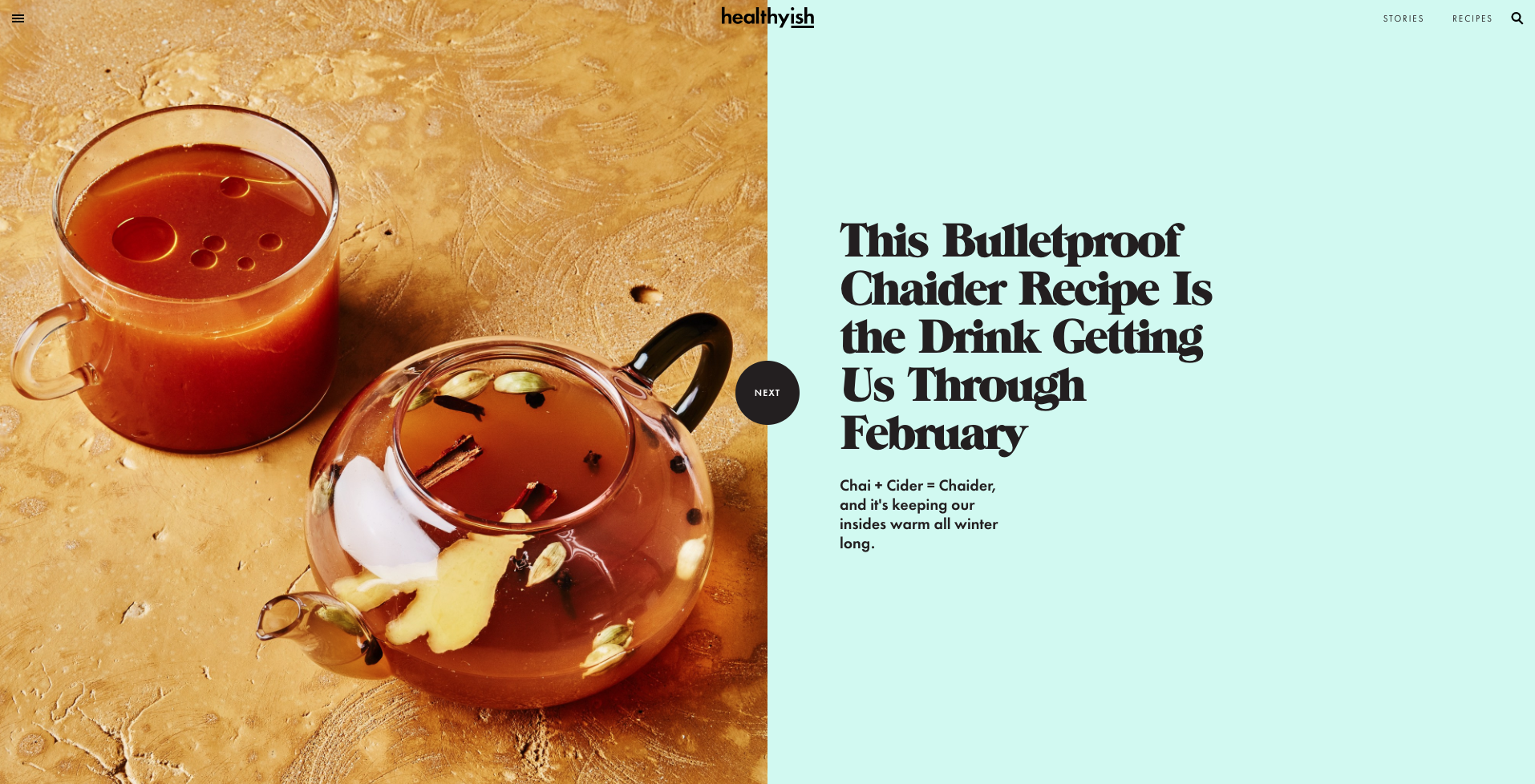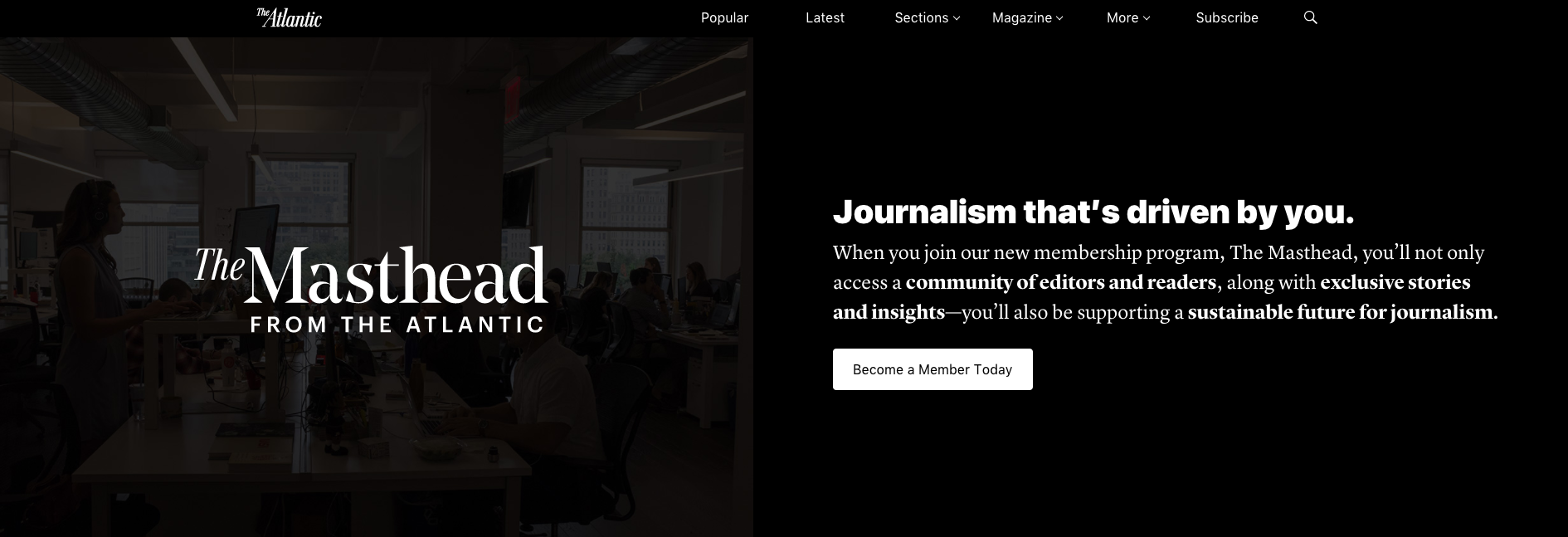Three different ways The Atlantic, Digiday, and Condé Nast approach reader monetization

You’ve heard the news: Facebook is deprioritizing publishers in the News Feed in favor of baby pictures and engagement announcements. Pair that with the fact Facebook and Google now capture roughly 75% of digital ad spend in the United States and 99% of its growth—even publishers with a large audience are struggling to get meaningful revenue from digital advertising.
Now, publishers of all sizes are seeking new ways to make their digital news organization a sustainable operation.
Sam Rosen, Head of Growth at The Atlantic, points out a key revenue stream for these publishers: “There’s a power in being able to get money directly from consumers that probably no media brand should ignore.”
By going directly to consumers, publishers will be able to foster a loyal audience while bringing in meaningful revenue. We heard from three audience development professionals who shared some of the unique ways they are monetizing their audiences.
Identify missing audiences and develop new products to reach them
Condé Nast, which has been around for more than 100 years, understands the importance in reinventing the wheel to develop new products and brands to serve their various customers. Mary Beth Dwyer, Head of World Sales Operations for The Lifestyle Collection at Condé Nast, gave us insight into what they have been doing:
“In the past 12 months, we’ve launched three new brands in my group. If you know Condé Nast, you know our brands are pretty legacy as they’ve been around a long time, so we’re thinking about ways we can develop brands for some of our consumers or an audience we’re not reaching.”
Dwyer’s group noticed a gap in their Bon Appétit brand—a lot of Millennials love to eat out, love the authentic experiences, and are excited to understand the dining scene. However, no one was really catering to them in the sense of learning how to cook, and sometimes Bon Appétit’s recipes felt a little too aspirational and difficult to accomplish.
In the same vein, some of the easier recipes available online weren’t from brands that Millennials felt were authentic. So, in January 2017, Condé Nast launched a new brand called Healthyish from the editors of Bon Appétit. It takes on a wellness angle and thinks more holistically about the lifestyle that their audience is living. They created new content types that would focus on making cooking a step-by-step experience that was easy to follow along with but that still had a voice that was different, unique, and authentic.

Mary Beth said, “If you’re subscribing to the content that a brand is delivering to you, you’re a subscriber, you are a consumer. [As publishers], we need to be thinking about how we’re engaging those subscribers in each of the different mediums that we’re storytelling in. I think the key is discovering what the value of that user is in each of those mediums and being able to monetize them accordingly.”
Provide value and quality journalism in return for paid subscriptions
Consumers’ willingness to pay will only hold firm if publishers provide value and maintain meaningful relationships with them—which means delivering more than just a metered paywall and their monthly bill. Some of the most successful businesses with subscription models, such as Amazon, Netflix, and Spotify, also offer great customer service, increased focus on personalized recommendations, and great user experiences across multiple devices.
Sam Rosen, Head of Growth for The Atlantic, shared how they are building relationships with their readers through a membership program. The Masthead is “a premium membership that delivers exclusive stories, insights, and analysis from The Atlantic‘s journalists and thinkers—built on a direct relationship with members.” Now, every month, they send their subscribers an exclusive and self-deprecating email from their editor-in-chief, Jeff Goldberg, that talks in a very honest way about the process in the newsroom.

With thousands of members, The Masthead is already a healthy, profitable revenue stream. According to Rosen, “What we’re finding is building a much deeper, more intimate relationship with all of our readers is what we’re seeing success with on the direct link, consumer revenue side.”
Use hyper-segmentation to deliver value
Aaron Gottlieb, Audience Development at Digiday, shared the success they’ve seen through events: “We saw months ago that Artificial Intelligence was going to be big. We started building some products for AI so next year we can launch the AI Summit, which I don’t believe anyone else in our space is doing.” By understanding who their audience is, Digiday is able to create new products and summits at the same time as they are doing everything else, even though they aren’t a massively large company.
“We had an agency summit in Charleston at the same time as a publishing summit in Berlin. Our marketing team is able to look at our different audiences and products and attack completely different segments which enables us to make revenue while doing a ton of different things,” said Gottlieb.
To further the success they’ve already seen through events, Digiday plans to do 50-60 of them this year, ranging from 1-3 day summits. By bringing people from the digital world into a physical room, they are able to create a direct connection where they are spending time with their users, talking to them, and learning what’s going on with their businesses.
Gottlieb continued, “For our summits, we essentially have [the audience] captive for three days discussing these things. After those three days, we have a tremendous opportunity to convert them into paying subscribers [of Digiday+]. They just spent all this time with us. They’ve been networking and learning from people for three days. […] Bringing people into our circle is a much easier sell than just hitting them with an offer once they land on Facebook.”
How can you guide your efforts?
When sharing the above advice on a monetization strategies panel at the Audience Summit in New York City, Condé Nast, The Atlantic, and Digiday all identified areas that will connect them closer to their audience and increase their ability to fend off the threat of Google and Facebook. Want to see where your audience is engaging, where they aren’t, and identify gaps or opportunities in your strategy that you can transform into revenue streams?
Get the guide to see how you can use Parse.ly to help you drive revenue.